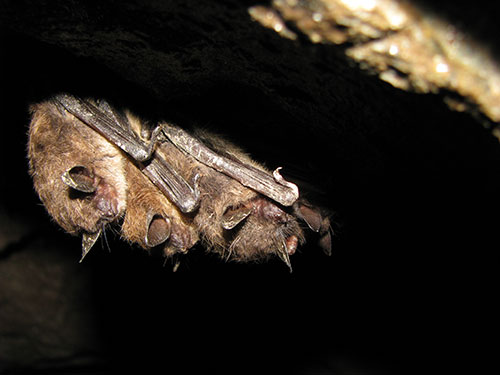The New Hampshire Bat Survey Project began in 2012 when New Hampshire Audubon joined forces with the New Hampshire Fish & Game Department, the U.S. Fish & Wildlife Service New England Field Office, and Northeast Ecological Services to coordinate statewide surveys of bats throughout the state.

Using sensitive recording equipment, bat survey volunteers drive along quiet roads on clear evenings in June and July recording bat vocalizations along the route. These acoustic data are then analyzed using special software to identify the species recorded and map locations.
The information collected in New Hampshire contributes to a nationwide effort to better understand species distribution and relative abundance, which are essential for guiding research and management of bat populations. Originally developed as a means of monitoring tree-roosting species being killed during migration by industrial wind turbines, acoustic surveys have been used in recent years to monitor bat populations devastated by the fungus that causes White-nose Syndrome. This disease has killed millions of bats throughout the eastern U.S. and maritime Canada since its discover in 2006, and in New Hampshire, has caused an estimated 99% decline in little brown bats (Myotis lucifugus), a once abundant and widespread species.
Summer Bat Colony Counts
Bat survey volunteers also help monitor surviving maternity colonies of little brown bats. Each spring, females congregate in dry, warm places, such as attics, barns, and church steeples to give birth and raise pups, often returning to these sites year after year. Locating and protecting remaining colonies is critical to this species’ survival. Homeowners and building managers can help by allowing colonies to remain in place, and reporting these sites. In addition, homeowners and volunteers can participate in a citizen science effort by learning how to count the bats as they exit their building roosts in the evening, collecting that data, and sending it in. This data will further our knowledge about colony locations, species, and numbers of bats in each colony.
For more information on the New Hampshire Bat Survey Project, see the website:
